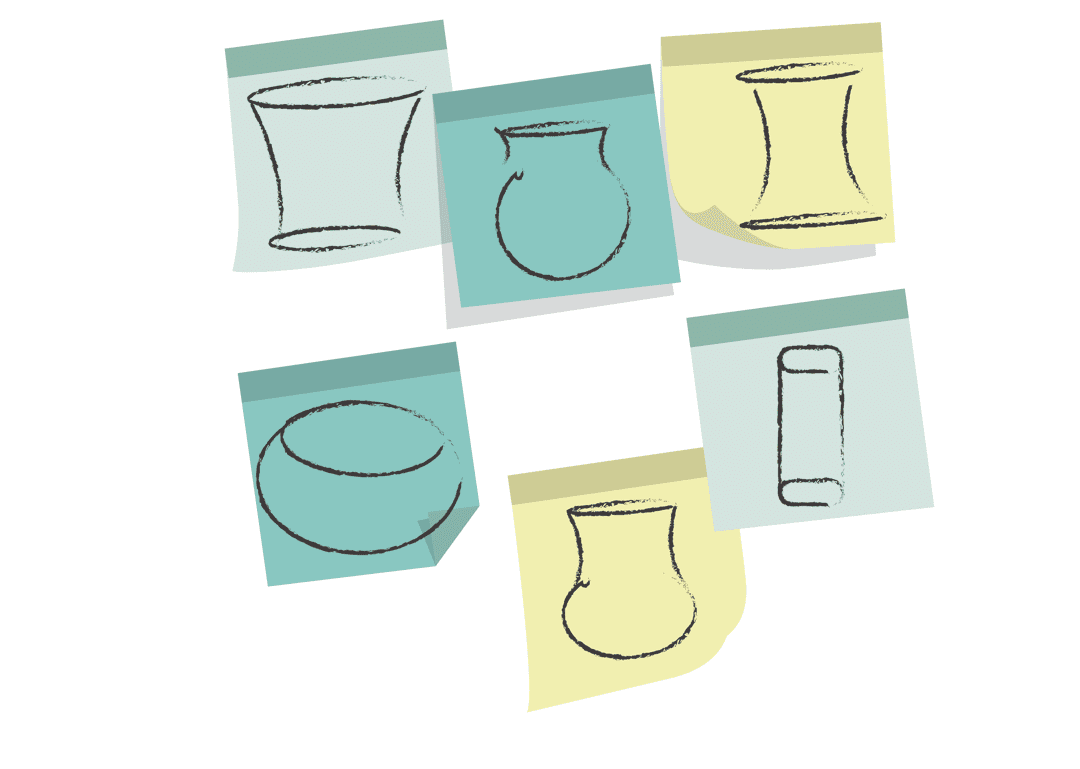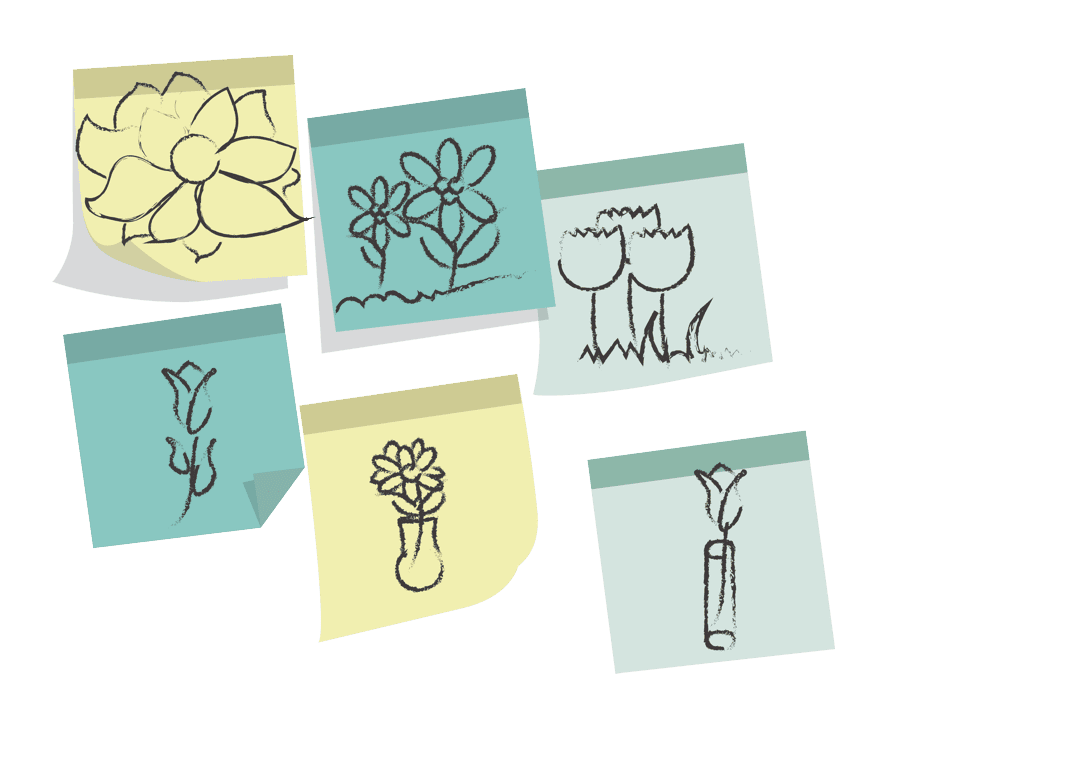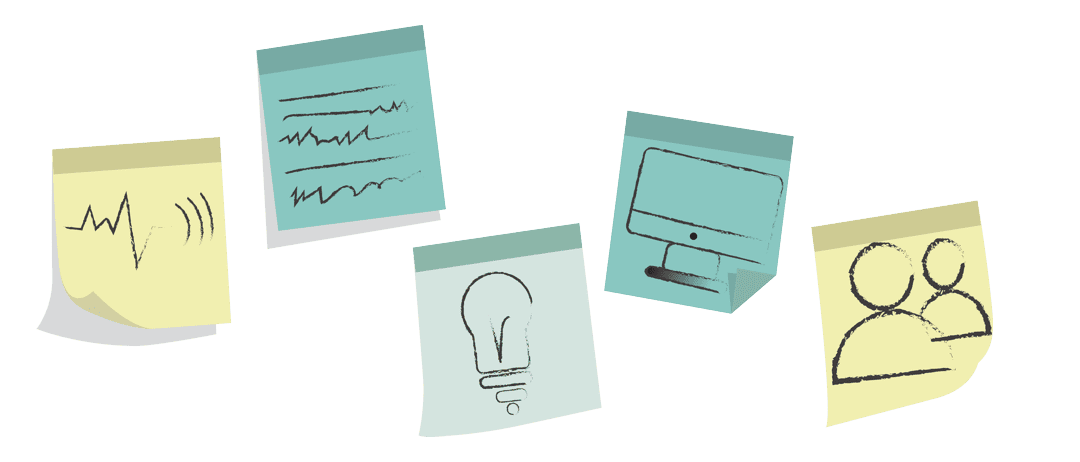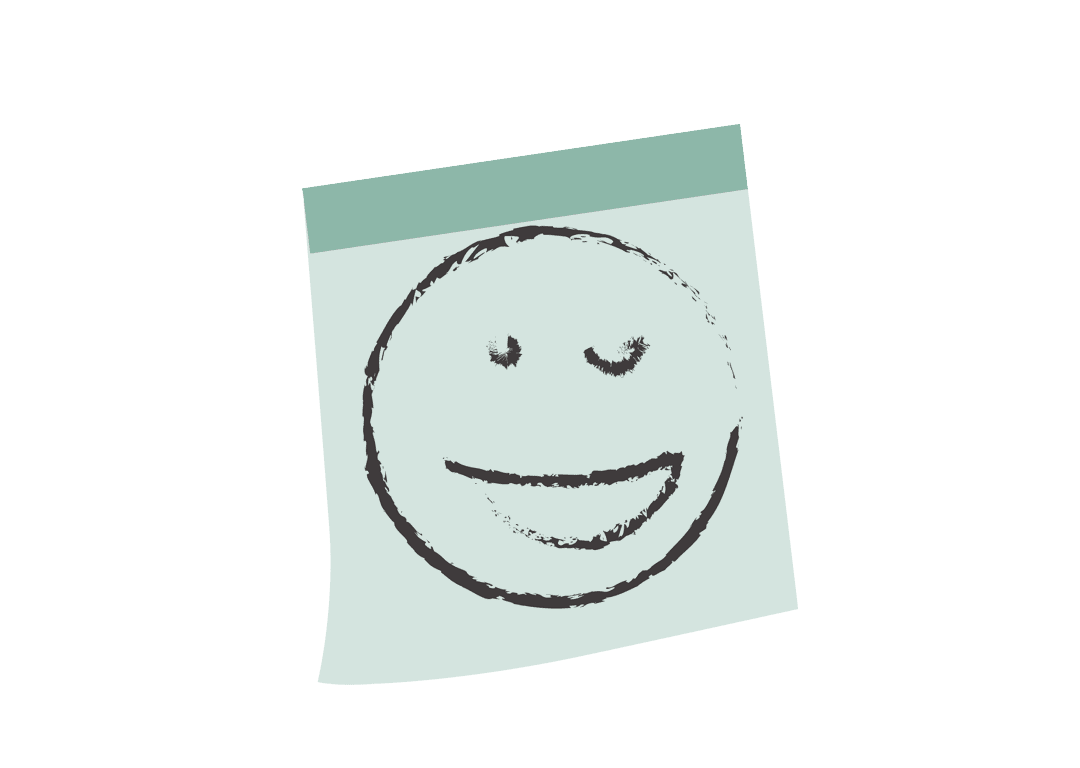Listen to Your Learners
Design thinking for online learning development.

Design Thinking for Online Learning
There’s a fun starter activity that many design thinking practitioners use to kick off an ideation session or design sprint. It goes like this. Give everyone in the room the ubiquitous stack of post-it notes and sharpies then give them a time box of maybe 5 minutes, to draw a vase — as many versions of a vase as they can in the time allotted.
It generally turns up a set of doodles that look like this.

The moderator then asks the room to review the drawings and notice commonalities. You are welcome to play along as you read. So what do you notice? All the images feature some kind of opening, some depth, basically, they are all a container of some sort.
Now the moderator asks the room to repeat the exercise, this time the directive is not to draw a vase, but draw a way to experience flowers — as many ideas around experiencing flowers as they can in the next time window.
Can you guess where this is headed? Something like this…

Reframing the Problem
By reframing the ask, or in many cases the problem you are solving for, you can have radically divergent, unexpected, and innovative results.
The parallel to online learning is important. For far too long designing online learning has been like coming up with multiple different digital vases to hold the key ingredients that most institutions believed made up an effective course. The opportunity today, as more and more organizations explore their strategic digital learning offerings, is not just to make another container for learning, but to innovate a brand new and better experience of learning that will serve your learners’ needs first.
A design thinking approach is one of the most effective ways to get there.
“When we’re going to offer a new program, it’s not because somebody thinks it’s a good idea, we base it on what the market is showing us. We do lots of social listening type of research to find out what the needs are for students. We try to find a need and fill it versus building the next shiny thing.”
“That’s how our entire institution, American Public University, was started. Our founder saw a need that wasn’t being filled for deployed service members, they were only able to take advantage of their tuition assistance if they were on a schedule where they were off duty at a time when courses were being offered on base. So we started off as an online college that was actually a service correspondence.”
Cali Morrison is the Associate Dean/AVP, Alternative Learning at the American Public University System and, she is in charge of innovating new programs, products, and approaches for her organization.
“It’s important to recognize that not every new technology out there is going to work for every person. We need all different types of learning to meet all different kinds of learners. And I think that the key is that we have to recognize who our audiences are and build for them.”
Making users’ needs and experience the center of your design is the heart of a design thinking approach, but that is just the first step of a well defined and collaborative process that helps you tap into creative innovation with broader institutional buy-in, less risk, and higher user satisfaction.
So what exactly is design thinking and what are the advantages to a design thinking approach to creating digital learning?
Design Thinking — The Basics
Design thinking, also called Human-Centered Design, is a creative problem-solving approach that puts people at the heart of the ideation process, specifically the end-user of a product, process, or experience. Designers and stakeholders then collaborate to identify the user needs they are trying to meet. They then design and rapidly prototype a solution, and get that prototype in front of users immediately so they can iterate and build based on actual feedback.
There are several well-known voices in the world of design thinking like the Stanford Design School, IDEO.org, The Luma Institute, each with their own shorthand for this process, but they all share the same basic steps:

- Listen or Empathize with your specific user types or personas to understand what they need.
- Use that understanding to Define the problem you are trying to solve and who you are solving it for.
- Invite diverse perspectives to collaboratively Ideate a solution to test.
- Prototype your solution.
- Then Test it with your users and use that feedback to Iterate and improve the product or experience.
Cali Morrison — “The value of this approach is it helps break the mindset of this is the way we’ve always done it. And it helps do that by using actual user data to show why change is good.”
And the results are proven. In 2015, a study tracking the performance of the US stock market over a ten year period showed that design-driven companies outperformed the rest of the S&P index by 228%. Design-driven companies include Apple, Amazon, Coca-Cola, Nike, Ford, IBM, Starbucks, Netflix, and Target.
Designing Online Learning
So we know the process works, but what does design thinking for online learning look like in practice?
“In my opinion, the key consideration for designing digital learning is creating a learner-focused environment when laying out the course content and supporting student success. This ultimately involves the effective application of graphic design principles and elements, combined with an engaging platform.”
LaDale Whaley is both a graphic and learning designer with broad experience designing online learning from concept to launch. In her work, she goes beyond simply understanding user needs. Her job is, in part, to understand and improve the users’ experience of the learning programs that she and her collaborators create.
When developing successful learning environments there are important steps necessary to ensure the digital learning experience is focused on students and their success.
After deeply researching users and user needs and collaboratively ideating solutions with stakeholders like faculty and program directors and collaborators like subject matter experts, technologists, learning designers, and content creators, LaDale and her design team go through a well-defined set of steps to design, prototype and test ideas.
Step 1: Create the Design
LaDale Whaley— “First, the Graphic Designer develops a creative plan that provides the style guide. It provides details of the look and feel. Then, the User Interface (UI) Designer establishes a wireframe prototype based on the whole team brainstorming session. After that, the User Experience (UX) Designer develops personas of 3 to 4 possible users.”
These three elements; graphic design, user interface, and user experience must build upon each other in order to be successful.
Step 2: Develop the Prototype
Next, the initial design plans are developed into prototypes. The fidelity of the prototype can vary depending on what the design team wants to find out from users. It can be a clickable version of a user flow with fully rendered samples of graphics and learning content, or simple static wireframes or storyboards to map test user navigation.
Whatever level of detail a design team is working with, LaDale suggests a few tips to help get the best user feedback to iterate from:
- Provide white space — give the users’ eyes a break between concepts and ideas.
- Less is more — Don’t overload the screen with information.
- Use as much original material as possible — icons, images, and text.
Step 3: Conduct User Testing
With a prototype built, it’s on to user testing. This is an essential component of the design thinking approach. Considering that the cost of fixing a mistake can increase as much as 100 times if done after a product launch. Prototyping allows organizations to catch potential challenges and unneeded features early on. Secondly, it’s the users’ feedback and interaction with the prototype that often surface the most impactful design decisions.
In a learning context, this learner-generated feedback can be as simple as proving to designers that a student understands what they are learning.
LaDale Whaley— “For me, success is when someone who does not know or understand the content is able to get the message in 60 seconds or less. This lets me know that my design is clear and concise.”
On a broader level, user feedback in the form of user data can be a critical factor in deciding whether or not to scale up a product.
Cali Morrison — “We can see, adoption levels, how well are they doing? Are they engaging with the material on a regular basis? Or where do they fall off? And why did they fall? So we’re on a kind of a continuous cycle and then, as we move to scale, we also do continuous evaluation. So we work with both designers and with our faculty who are teaching to see whether or not this is something we should continue doing or expand to the wider institution.”
Silo-Shattering
There are numerous and well-documented benefits to using a user-centered design approach but probably one of the most important is the ability of this approach to break through organizational silos to create programs and processes that put students’ needs, rather than organizational needs, first.
From a learning perspective, when you invite a cross-functional team that includes your faculty, learning designers, students, graphic designers, UI and UX specialists, multimedia developers, and writers and they are able to participate in the design process from ideation to implementation, it produces an overall better experience for learners.
Cali Morrison — “We take a very collaborative approach to designing courses or competencies. Everyone is bringing knowledge the others don’t have. Your faculty member is bringing subject matter expertise that your learning designer and your multimedia person don’t necessarily have. And it’s not the fault of that faculty member if they don’t have expertise in multimedia design. Taking advantage of every brain makes the whole product better.”
And ultimately a better designed online program, tailored to user needs, won’t just drive a better learner outcome, but will create a universally better experience of learning — rather than just another “digital vase.”
Coming Up Next
In our next article in this series, we will look at building online courses and the types of professionals needed to make it an efficient and cost-effective process.

Images by: LaDale Whaley
About the Authors
Sarah Hutt is an award-winning documentary filmmaker and author. Her writing has made the NY Times Best Seller list and she is a Publisher’s Weekly Starred Reviewed author of nonfiction works for children and young adults. She has brought storytelling to the online courseroom and classroom for educational clients like Girls Who Code, McGraw-Hill, Focus Curriculum, and is a founding team member of SEI Studios, Strategic Education Inc’s in-house production studio and story lab. Sarah is the owner of Cave Productions, offering design thinking workshops, content strategy, creation, and story consulting services.
Ashley Lonie is the Founder of Teamed, a staffing agency and talent marketplace for the online learning and development industry. She is an experienced educator, learning designer, and leader in online learning design and development.




